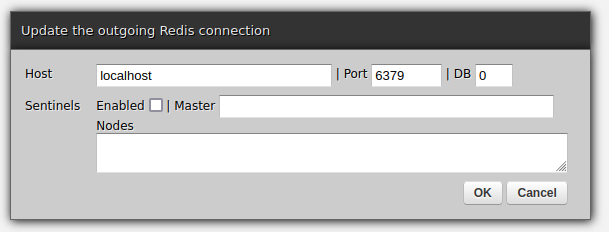Enable the default connection in Dashboard and then any programming feature that Redis offers will be available to your services via the underlying redis-py library, as in the examples below.


# -*- coding: utf-8 -*-
# Zato
from zato.server.service import Service
class MyService(Service):
def handle(self):
self.kvdb.conn.set('my-key', 'my-value')
self.logger.info(self.kvdb.conn.get('my-key'))
# -*- coding: utf-8 -*-
# Zato
from zato.server.service import Service
class MyService(Service):
def handle(self):
# Clear/delete the list
self.kvdb.conn.delete('my-list')
# Push 10 elements
for x in range(10):
self.kvdb.conn.lpush('my-list', x)
# Read them back
self.logger.info(self.kvdb.conn.lrange('my-list', 0, 9999))
# -*- coding: utf-8 -*-
# Zato
from zato.server.service import Service
class MyService(Service):
def handle(self):
# Clear/delete the dictionary
self.kvdb.conn.delete('my-dict')
# Set 10 keys and values
for x in range(10):
self.kvdb.conn.hset('my-dict', x, x**x)
# Read one of them back
self.logger.info(self.kvdb.conn.hget('my-dict', 7))
Pipelines can be used to improve performance of the execution of multiple operations and to invoke the operations atomically.
# -*- coding: utf-8 -*-
# Zato
from zato.server.service import Service
class MyService(Service):
def handle(self):
# Either deletes all the keys specified and adds a new one or none
# of it is performed.
with self.kvdb.conn.pipeline() as p:
# Deletes
p.delete('my-key-1')
p.delete('my-key-2')
p.delete('my-key-3')
# Add new key
p.set('my-key-4', 'my-value')
# Execute all the commands queued up in a single transaction
p.execute()
Book a demo with an expert who will help you build meaningful systems that match your ambitions
"For me, Zato Source is the only technology partner to help with operational improvements."